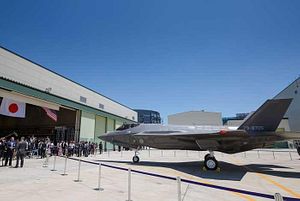The Japanese Ministry of Defense (MoD) announced last week that the Japan Air Self-Defense Force (JASDF) has resumed training flights of its fifth-generation Lockheed Martin Lightning II F-35A Joint Strike Fighters as of August 1.
Following the crash of a JASDF F-35A into the Pacific Ocean off northern Japan on April 9, the service’s entire fleet of 12 Joint Strike Fighters was grounded pending an investigation into the causes of the accident.
The crashed Joint Strike Fighter was one of four F-35As that took off from Misawa Air Base for a training mission at 6:59 p.m., Japan time, on April 9. The aircraft disappeared from radar tracking systems at 7:27 p.m. about 135 km (84 miles) east of Misawa Air Base, in the northern part of Japan’s main island of Honshu. As I reported previously:
According to the JASDF, [the pilot] engaged in aerial combat training and shot down two enemy aircraft in a simulated dogfight.
[The pilots] last message was transmitted in a “calm voice,” the JASDF notes in its report. A few seconds after the pilot’s last message was received his aircraft crashed into the Pacific Ocean at more than 1,100 kilometers per hour (683 miles per hour) with no reported attempt by [the pilot] to avoid a collision.
There is no evidence that the pilot managed to eject from the cockpit before the aircraft hit the water.
While the crashed F-35A’s tail was found on the ocean’s surface, the aircraft’s fuselage continues to be missing. A Japanese search team did manage to recover parts of the F-35As flight data; however, it was reportedly too heavily damaged to yield any additional information about the cause of the accident.
In June, a JASDF report noted that pilot vertigo was the most probable reason for the crash. The report posited that the pilot most likely suffered from “spatial disorientation.” Notably, the report exclusively relied on pilots’ testimonies and data and communication received by ground controllers.
The pilot of the aircraft, Major Akinori Hosomi of the 3rd Air Wing’s 302nd Tactical Fighter Squadron, was officially declared dead at the beginning of June. Body parts recovered among the F-35A wreckage drifting on the ocean’s surface on April 10 were confirmed to belong to the pilot by Japan’s defense minister on June 7.
The JASDF announced that as a result of the crash its F-35A pilots will undergo additional vertigo training. Various sources have repeatedly expressed concerns that other technical problems may have contributed to the crash.
All 12 F-35As underwent a technical checkup following the accident over the last months. This also included the 14th F-35A, assembled at the Mitsubishi Heavy Industries (MHI) F-35 Final Assembly and Check Out (FACO) facility in Nagoya.
































